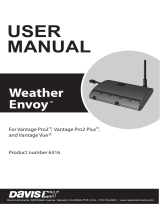
LTE Pressure Logger (4G NB-IoT/CAT-M1)
Installation Guide
Thank you for purchasing the Tekelek Pressure Logger 4G NB-IoT/CAT-M1
which is an ATEX certified multipurpose data logger which communicates
data to a remote server, suitable for monitoring fuel tanks levels and flow
rates.
Safety Information:
The Pressure Logger is ATEX compliant, but if installing in a harsh,
environment first check local applicable regulatory and safety
guidelines to ensure installer security. Please refer to the User Manual
for more information on the warnings and hazards.
STEP 1: Installation
The PRESSURE Logger works in conjunction with a remote server and
before installation must first be registered to this. Access to the backend
server is required to verify that the unit has correctly joined the network.
The following outlines the Pressure Logger mounting options. It is
recommended to mount the logger vertically as shown above.
• Cable Ties – Handle mount:
• Cable Ties – Horizontal mount onto pipe:
• Cable Ties – Vertical mount onto pipe:
• Screws – Wall mount:
• Screws – Wall mounted from the rear:
• The pressure sensor cable should be installed in an orientation facing
downwards.
STEP 2: Activation
Hold the supplied magnet to the indicated hot spot on the Pressure Logger,
4 short beeps will be heard approx. one second apart, these will be
followed be a long beep which indicates that the logger has been activated
and will now attempt to connect to the network.
• A series of beeps will be heard. This indicates the logger is registering
onto the network.
• Upon successful registration to the network the logger will attempt to
initiate a connection to the server, details of which have been
preconfigured in the logger. This is indicated by higher pitched beeping.
• The successful activation of the unit is indicated by two successive short
beeps two seconds apart. Once the logger has successfully connected,
the server must issue the required commands to the logger to
complete the activation process.
STEP 3: Beep Pattern
High beep once per second
Low beep once every 4 seconds
Low beep once every 2 seconds
Re-establish Network / TCP
High / Low combination beep
Low / High combination beep
Low double-beep every 4 seconds
Network Listen
(Data Received & Unit Active)
Low double-beep every 2 seconds
High double-beep every 4 seconds
TCP Listen
(Data Received & Unit Active)
High double-beep every 2 seconds




